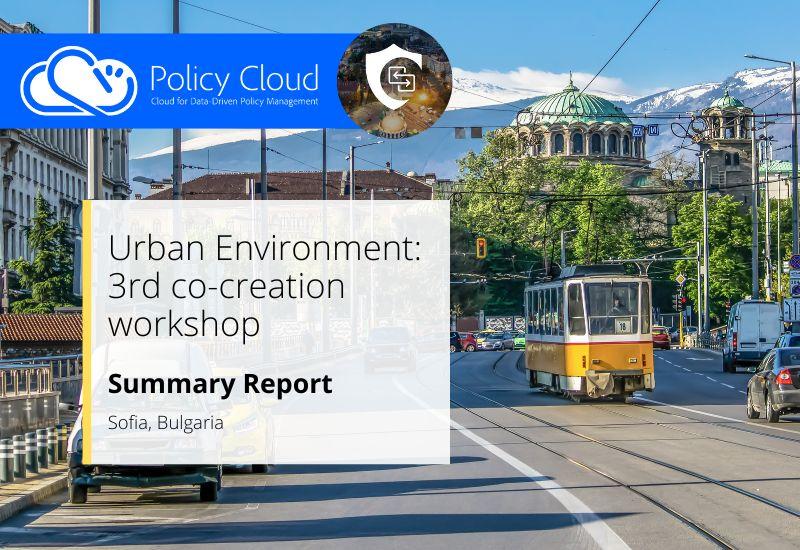
- Cloud for Data-Driven Policy Management
- Contact Us
- Join our community
- Login
Sofia Co-creation 3rd Workshop: Post Event Summary
Written by Metodiyka Tarlyovska, Innovative Sofia
The co-creation workshop in Sofia was held on October 26, 2022.
We invited interested parties who work with databases and produce reports with data visualisation on a daily basis.
Colleagues from different fields visited our event and we demonstrated how to work with the platform. By logging into the system with the profile of Metodiyka Tarlyovska, we demonstrated how to develop a policy model, how to select a specific database, how to specify parameters for the analysis and how to view the uploaded information contained in individual databases uploaded to the platform. We also explained how to save the draft policy model. The demonstration was very detailed and the participants were impressed with how easy and quick it was to prepare the analysis.
The participants had the opportunity to see how to enter the Policy Development Toolkit (PDT) where they can choose from a wide range of models that are already prepared and uploaded.
We demonstrated how the different policy models are implemented and what visualisations can be applied to them.
The demonstration of predictive analytics and graphics were of a particular interest to the audience. Participants really liked the ability to generate forecasts of assumptions, which can lead to the optimisation of processes in the planning of activities related to the improvement of urban environments. Using predictive analysis, we as a public administration body will be better prepared for the different policy scenarios and outcomes.
After presenting the platform and the various visualisations prepared by the technical team, we showed the Data Marketplace.
Our team, supported by Mrs. Peta Nikolova, representative of Okys, outlined the possibilities, purpose and services of this tool, including how it would be useful for the different users of the developed product.
The audience was impressed by the efficient gathering of data in one place where good practices and resolved technical issues could be shared between users.
We held discussions about ways to use the platform in the future. Some of the attendees expressed their concern that at such a late stage of project development, it is unthinkable not to have a clear vision of how the platform will be technically supported, how data will be uploaded (whether this will be done by the users themselves of the platform support team and whether only the technical teams could actively communicate with the platform support). It was recognised that after gaining more experience with the specific platform, users can make more relevant suggestions for optimisation of processes. There was a lot of interest about the price and the mechanisms to pay for the tools. A key question was whether partners can use the platform for free or, despite having participated in creating the platform, they have to pay a subscription and the appropriate level of fee for external users. Another interesting question was whether there will be training for new users or a single menu of instructions for them to follow.
Another question that was of interest to the participants was the possibility of combining data collected from different sources and how they would be able to use it on the platform. A major question was how processing of various information can be carried out so that data can be structured in such a way that they can be used for comparative analysis.
One of the questions asked was related to the number of accounts that each organisation that pays a subscription to the platform can use.


